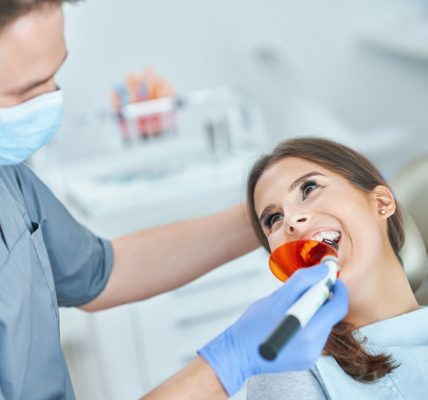When it comes to orthodontic treatment, timing can be everything. Starting treatment at the right age can make a significant difference to the outcome and the journey itself. So, when is the best time to start? We often hear this question from parents and patients alike, and the answer might surprise you. It’s not one-size-fits-all, but there’s plenty of expert advice to guide you in the right direction.
Early Evaluations and the Role of Family Dentistry
First things first, when we talk about orthodontic treatment, we should remember the importance of overall dental health. Your local dentist plays a critical role in identifying when it might be time to consider orthodontics. Clinics offering family dentistry, pediatrics, orthodontics, and dental implants serve as a one-stop shop for your dental needs. They’re prepared to monitor your dental health as you grow, which is critical in determining the right time for orthodontic interventions.
But did you know that the American Association of Orthodontists recommends that children have their first orthodontic evaluation by the age of seven? At this age, they will have a mix of baby and permanent teeth. It’s an ideal time for an orthodontist to identify current or potential future issues. However, it may mean something other than that treatment will start immediately. It’s about laying the groundwork for the best possible orthodontic care, should it be needed.
Understanding the Phases of Orthodontic Treatment
Orthodontic treatment can be divided into several phases, and understanding these can help in recognizing the best starting point:
Phase 1: Interceptive Orthodontics
This phase typically occurs between the ages of 7 and 11, and it’s all about intervention. Interceptive orthodontics aims to address issues that, if left unchecked, could develop into more severe problems. At this stage, treatment may involve guiding the growth of the jaw and incoming permanent teeth.
Phase 2: Comprehensive Orthodontics
Once all the permanent teeth have come in, we’re looking at the sweet spot for comprehensive orthodontics – usually around the age of 11 to 13. This phase often involves the full-on braces or aligners that most of us are familiar with. It’s about aligning the teeth and making sure they mesh correctly.
Phase 3: Retention
After the active phase of treatment, we enter retention. This phase involves wearing retainers to ensure that the hard work of phases 1 and 2 doesn’t go to waste.
Recognizing the Individual Needs
While the phases of orthodontic treatment give us a broad framework, it’s important to remember that every mouth is different. Some kids might need to start treatment earlier than others, and for some adults, there is always time to get that perfect smile. A visit to a dentist in Pittston, PA, would ensure that you get a personalized treatment plan that aligns with your needs.
If you’re living nearby and looking for exceptional care, seeking out a dentist Pittston that specializes in both general and orthodontic dentistry can provide an integrated approach to your treatment.
Factors to Consider When Starting Treatment
-
Physical development and dental maturity – Some children’s teeth and jaws develop at faster rates.
-
Potential social and psychological impacts – For some preteens and teens, the appearance of braces is a concern.
-
Severity of the correction needed – Extremely crowded teeth or severe bite problems may require earlier intervention.
-
Patients’ compliance and responsibility – Treatment success often depends on the patient’s ability to follow through with the orthodontist’s instructions.
These factors, among others, contribute significantly to the success of orthodontic treatment, which is why no single age is the “best” for everyone.
Is There an Age Limit to Orthodontic Treatment?
Gone are the days when braces were just for kids. More adults are opting for orthodontic treatment and with good reason. With the advent of subtler options like clear aligners, adults feel more comfortable seeking treatment later in life. So, if you’re an adult pondering over whether it’s too late for you – rest assured, as long as your teeth and gums are healthy, age is merely a number.
Advantages of Starting Young
When treatment is initiated at a younger age, there’s an opportunity to guide facial growth and tooth eruption, which can reduce the need for more invasive procedures later on. Early intervention can also prevent the extraction of permanent teeth and improve some speech problems. So, while you don’t need to rush to the orthodontist as soon as your child’s first tooth pops up, being proactive can have its benefits.
Approaching Orthodontic Treatment as an Adult
For adults considering orthodontics, advancements in dental technology mean you now have more options than ever. With discreet treatments available, the concern over appearance becomes less of a barrier. Additionally, more adults are seeing the value in investing in their smiles for both professional and personal reasons.
Accessing quality dental services in West Pittston can make this journey smoother for adults in the area. Whether it’s for aesthetic reasons or functional ones, such as improving your bite, the local dentist Lackawanna County can cater to your specific needs.
Wrapping Up
There’s a lot to consider when deciding on the best age for orthodontic treatment. The key takeaway is that the best time to start depends on individual circumstances. Regular check-ups with a trusted dentist will help catch potential issues early, and consultations with an orthodontic specialist can provide the road map for treatment, should it be necessary.
Keep in mind that whether you’re a concerned parent or an adult looking to enhance your smile, the journey toward a healthier, more confident grin is a personal one. With today’s dental options, there’s a solution out there for nearly every scenario. So take that first step – schedule an evaluation and find out what the path to a perfect smile looks like for you or your child.








